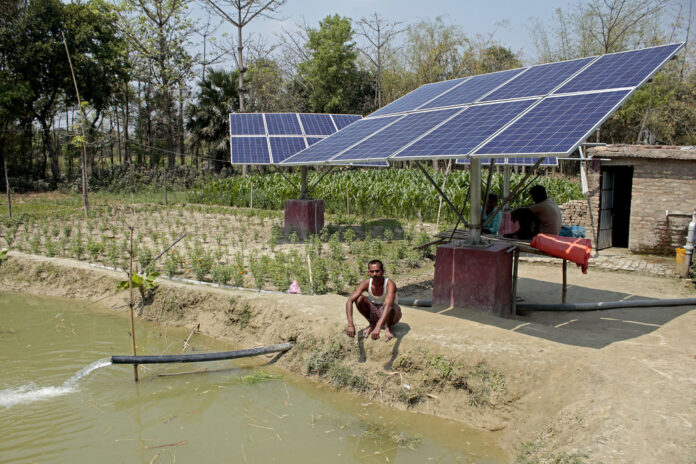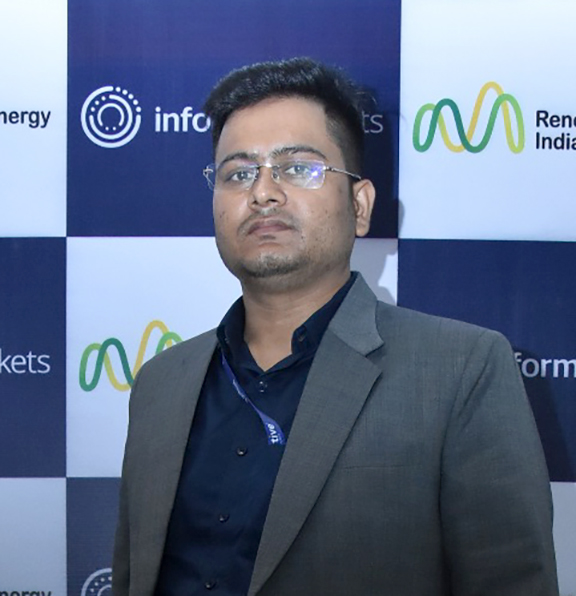
India, a country marked by diverse geographical terrains and climate conditions, faces significant challenges in ensuring sustainable water management. The nexus between energy and water infrastructure has become increasingly important as the country navigates its growth trajectory. In recent years, solar infrastructure has emerged as a pivotal solution in addressing the nation’s water challenges, especially in rural and underserved areas. Solar energy, with its abundant potential in India, is now playing a transformative role in enhancing water infrastructure through power-efficient and sustainable solutions.
India is one of the largest consumers of water globally, and the demand is projected to grow rapidly with increasing urbanization and industrialization. However, the country faces a water crisis characterized by inefficient water distribution systems, high dependency on groundwater, and limited access to clean water in rural regions.
To address this crisis, the Indian government and various stakeholders have increasingly turned to solar-powered solutions. Solar pumps, for instance, have become one of the primary technologies being adopted to address water accessibility issues, especially for irrigation purposes in agriculture, which consumes about 80% of the country’s water. According to the Ministry of New and Renewable Energy (MNRE), over 300,000 solar pumps have already been installed across India, primarily benefiting farmers and rural communities who previously had limited access to reliable electricity and water.
Solar-powered desalination plants, water treatment facilities, and water purification units are also gaining traction. In regions like Rajasthan and Gujarat, where water scarcity and energy shortages often go hand in hand, solar energy is providing a dual solution by enabling the extraction and purification of water while simultaneously reducing dependence on conventional grid power or diesel generators.
Challenges
Although solar technology offers long-term savings, the upfront capital investment for infrastructure like solar pumps or large-scale solar desalination plants can be prohibitively expensive, particularly for small-scale farmers and rural communities. Maintenance is another contributing factor to solar-enabled solutions because they require regular maintenance, which can be a challenge in remote areas where access to technical expertise is limited. The lack of trained personnel to install, monitor, and repair solar water systems impedes their efficient functioning over time.
Solar plants, especially large-scale ones, require significant land resources, which may create conflicts in land usage in densely populated or agriculturally significant regions. Thus, land scarcity is an impediment to solar-empowered water infrastructure on many occasions. Besides, integrating solar solutions with outdated water infrastructure poses technical and logistical challenges. In many places, India’s water distribution systems require substantial upgrades to benefit fully from solar energy innovations.
Solar to Water
The potential for solar energy to revolutionize water management in India is enormous. India receives abundant sunlight for most of the year, with an average solar insolation of 4-7 kWh per square meter per day across much of the country. Tapping into this resource allows for the decentralization of power generation, which is particularly beneficial in remote and off-grid areas where access to electricity remains challenging.
Solar-powered pumps have already made a significant impact on irrigation practices, reducing reliance on erratic grid electricity and diesel. Scaling up these solutions could further reduce energy costs for farmers while also promoting sustainable water use. The Pradhan Mantri Kisan Urja Suraksha evam Utthaan Mahabhiyan (PM-KUSUM) scheme is a critical initiative promoting the adoption of solar irrigation systems.
Solar desalination is quite useful in overcoming water scarcity in coastal regions. The technique of converting seawater into potable water using solar energy is especially vital for areas like Tamil Nadu and Gujarat, where freshwater resources are strained. Solar-powered desalination could also mitigate the effects of salinity ingress in coastal agricultural lands.
Solar energy does not only benefit rural or coastal areas in managing and utilising water resources. In urban areas, solar power can also be integrated into water treatment plants and water pumping stations to ensure continuous operation, even during power outages. This reduces the burden on the grid and makes urban water systems more resilient.
As incidents of flood and drought are increasing due to global warming, solar infrastructure can support water conservation efforts by powering technologies like smart irrigation systems and water recycling plants, which are crucial in managing the effects of droughts and floods. These systems can help maintain groundwater levels and reduce the stress on overexploited water resources.
Future Prospects
The future of solar infrastructure in empowering water infrastructure in India is bright, but it requires strategic planning and investment. The government’s push towards achieving 500 GW of renewable energy by 2030 is expected to provide a further boost to solar-powered water solutions. Key steps that can accelerate progress include policy and financial support from the government’s side. Schemes such as PM-KUSUM must be expanded and streamlined to ensure wider accessibility.
Undoubtedly, technological advancements in the renewable energy sector can easily convert the potential into strength. Innovation in solar technology, such as more efficient photovoltaic cells, hybrid solar-wind systems, and solar-powered water sensors, will help improve the efficacy and reliability of water systems across India. Research and development in this space can also lead to more affordable and user-friendly solutions. However, goals can only be achieved through partnerships and collaborations between the government, private sector, and voluntary organizations. Public-private partnerships can help bridge the gap between technology providers and end-users, facilitating knowledge transfer and better implementation of projects.
Solar infrastructure holds the key to transforming water management in India. By harnessing the power of the sun, India can address its water scarcity issues in a sustainable, cost-effective, and scalable manner. While challenges remain, the potential benefits far outweigh the obstacles, promising a future where clean, accessible water is within reach for all, powered by the endless energy of the sun.
Fayyaz Ashraf, MD, Solartive










